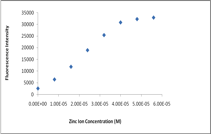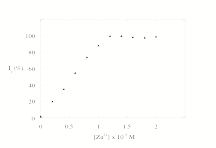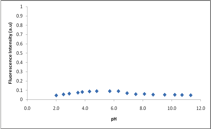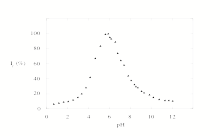

45137-B4
The Design and Study of Molecular-Scale Photonic Devices and Green Chemistry Approaches Towards Their Synthesis
We are interested in developing molecular-scale photoionic devices that can function as fluorescent switches with different cations. Most of these switches utilize photoinduced electron transfer (PET) to generate or quench fluorescence and are based on a chromophore-spacer-receptor architecture. Since many of these PET switches have tertiary nitrogen atoms as a part of the receptor, they generate fluorescent signals for various metal ions as well as protons.
The goal of this study is to design a new PET switch that contains a common nitrogen based receptor and is not sensitive to protons. This could be accomplished by including a separate PET channel to suppress the proton signal in these receptors. In our last report we introduced 1, a fluorescent switch that is based on another switch, 2, that was developed in our lab in the past.1 During the past year we continued our fluorescence studies of 1 in the presence of Zn(II) and protons.
Our results are shown below indicate that while both
1 and 2 function as off-on fluorescence
switches for Zn(II), 1 does not show fluorescence modulation with protons. Figure
1. Fluorescence
intensity (IF) of 1 (4.0x10-5M) vs. [Zn2+] (0-5.6x10-5M)
in methanol [left] and 2 (1 x 10-5 M) vs [Zn2+]
(0 - 2 x 10-5 M) in acetonitrile (lex = 350, lem = 370 - 550 nm) [right]. Figure
2. Fluorescence
intensity modulation of 1 [left] and 2 [right] (10-5M) with pH, in methanol/water
(1:1). (λex = 350nm λem = 370-550nm). pH was
adjusted by adding HCl & NaOH. This
is the first example of a fluorescent switch that includes a separate PET
channel to quench the fluorescence signal generated due to the protonation of
nitrogen in the receptor. We are
working on several PET switches based on 1 that have different nitrogen based receptors
that would be sensitive to different cations but not to protons. We are also in the process of
completing a manuscript based on this study. The PRF grant provided financial support for our work
including stipends for two undergraduate research students who worked with the
PI during the summer. 1. de Silva, S. A.; Zavaleta, A.;
Baron, D. E.; Allam, O.; Isidor, E. V.; Kashimura, N.; Percarpio, J. M. Tetrahedron Lett. 1997, 38, 2237.




